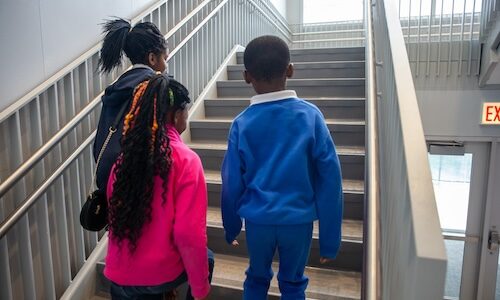
In my last post, I wrote about the factors that administrators should consider when implementing restorative justice (RJ) practices. This post will provide some research that may guide how to structurally support educators through RJ implementation and will offer some resources for teachers and support staff to integrate restorative practices into their roles.
Given the demands and complexities of teaching and working with students, the goal here is to name the various aspects of RJ that implementers and educators should consider in their contexts and to recognize that the systems that surround RJ implementation impact teacher experiences with RJ, which, ultimately, inform the student experience.
What are teacher experiences with RJ?
The promise and nuance of RJ implementation is especially relevant for teachers who are often tasked with ensuring that RJ practices are implemented in classrooms and who may engage in many of the day-to-day interpersonal RJ practices. On one hand, teachers have expressed that RJ practices have been beneficial in supporting students through conflict and cultivating engaging relationships with and between students. Others, however, have expressed concerns that RJ implementation can feel challenging as the ambiguity and demands (time for RJ, leadership, buy-in from other teachers, etc.) associated with RJ implementation may lead to challenges that make integrating RJ into the classroom difficult or, in some cases, result in perceptions of worsening school environments after the introduction of RJ.
These diverging experiences are reflective of both the difficulty of systemic change and the need for continual support for educators who are tasked with implementing RJ. As previously discussed, RJ is not a linear process, and the transformation that schools hope will reach students will also need to reach educators first because they are key conduits in school environments. For some, this means that RJ is inherently an adult-focused intervention, as the decision-making and organizational culture of school staff will ultimately be what transforms or reinforces the student experience.
With the need for systemic support for educators in mind, here are some ideas that may support educators in playing an active role in the development and implementation of RJ programs.
1. Recognize your role within the system
To start, it’s important for educators to recognize their role within their school systems, the power they wield, and how to incorporate RJ into their role. In her guided workbook, Restorative Practices at School, Becky McCammon provides a useful tool for educators to consider and use to reflect on their journey with restorative practices.
Just like with broader RJ implementation, transitioning to RJ is likely to be a long process for teachers, and McCammon’s workbook applies the appropriate care to the process and circumstances that many may face when beginning to incorporate restorative practices at school. In particular, the workbook is useful in helping educators consider how power dynamics are influencing their experience, and it offers tools to assist with the inherently challenging nature of systemic thinking and power-sharing within the classroom.
2. Integrate RJ into your standard practice, rather than thinking of it as an additional practice
Recognizing the power dynamics at play is particularly important because of how RJ may be implemented in ways that are outside of your control.
In the worst instances, implementing RJ may become another large expectation placed upon teachers, which can feel burdensome amidst the myriad of other expectations or mandates that educators are navigating. Because of this challenge, it is important to find ways (when possible) to integrate RJ practices into standard practice rather than designing practices that feel like an additional activity that are difficult to schedule. To assist with this, digital platforms like Amplify RJ have curated workshops, resources, and ongoing discussions with RJ practitioners to share ideas about how to integrate restorative practices into daily practice.
3. Opt for trust, buy-in, and power-sharing
Most importantly, it is crucial that educators are systemically supported in the implementation of RJ. This means transitioning from a traditional top-down implementation approach and building the infrastructure for an approach that incorporates more input from educators, students, and families in addition to administration.
For educators, this means building trust and capacity among staff to practice RJ with other adults in their schools, as building a commitment to RJ involves all stakeholders, not just those involved in cases where conflicts with students arise. Building the appropriate trust may take time, but it will also help prevent RJ from becoming siloed among a small handful of educators. Trust may also assist you in navigating challenges or uncomfortable moments during the implementation process.
Work worth doing
At their core, RJ practices are aligned with many of the values educators already share. The difficulty is recognizing that RJ may look and feel different to each person and, thus, should not be thought of as a one-size-fits-all philosophy. Because of this, committing to RJ is committing to a process of growth whereby learning and direction are shaped, in part, by all stakeholders. For educators, this means it is important to design systems in a way that encourages and reinforces this shift in operating, along with developing the appropriate trust and infrastructure to assist with integrating RJ into your day-to-day practices.







